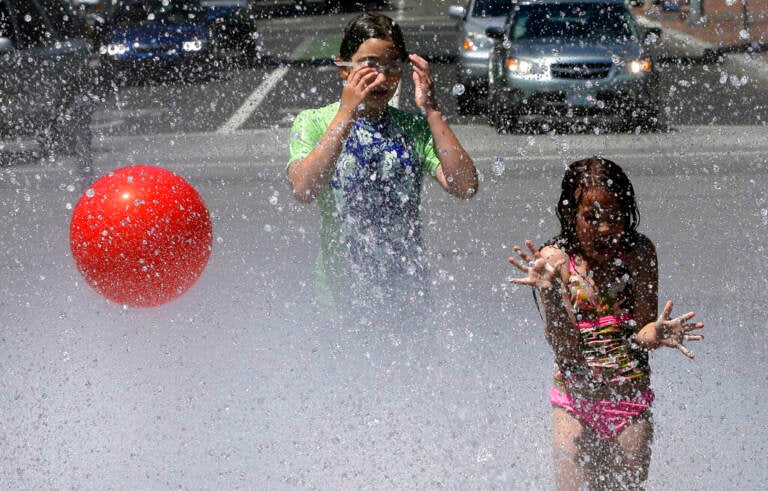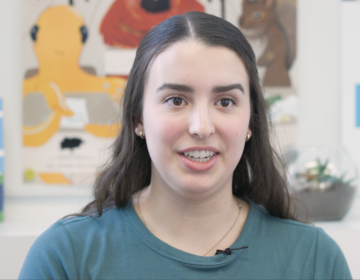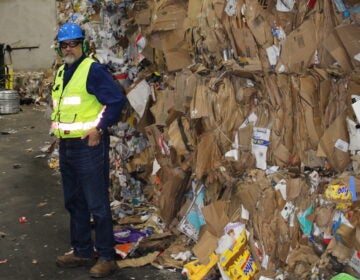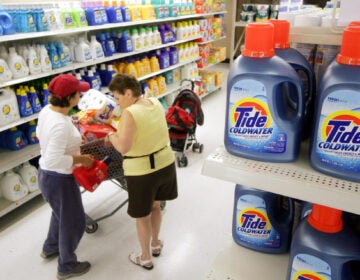Heat islands, urban trees and other cooling solutions for hot cities
Some Philadelphia neighborhoods with few trees can be 15 to 20 degrees hotter than more leafy zip codes. As climate change heats up cities, how can we cool them down?
Listen 49:15
Children play in a fountain. Health officials say that the impacts of climate change, including more devastating wildfires, heatwaves, drought and poor air quality. (AP Photo/Don Ryan, File)
It has been a hot summer in the Delaware Valley, but the extreme heat feels very different depending on your zip code, even within the City of Philadelphia. It’s all about the proportion of concrete and asphalt, which absorbs and radiates the heat, versus shade-providing trees and green spaces. Lower-income neighborhoods in the city have far less tree coverage and are therefore much, much hotter. Hunting Park is one of the hottest neighborhoods in Philly, with only 3% tree coverage – an “urban heat island” – compared to Chestnut Hill’s 60%, and it can be 15 to 20 degrees hotter.
Extreme heat and humidity is a serious threat to health and more people die from heat-related causes than any other weather disaster. With climate change pushing temperatures up, what can cities do to stay cool? Today, we’ll talk about urban heat islands, the role of trees and other cooling ideas and issues of environmental justice.
Guests:
Ivana González, Community Outreach Associate at Esperanza, in charge of the organization’s green initiative
Erica Smith Fichman, Community Forestry Manager at the Philadelphia Parks & Recreation and project lead of the Philly Tree Plan
Kurt Shickman, Director of Extreme Heat Initiatives at the Atlantic Council’s Adrienne Arsht-Rockefeller Foundation Resilience Center
Sophia Schmidt, WHYY’s PlanPhilly environment reporter
We recommend
WHYY, Philly citizen scientists gather heat and air quality data in hopes of a ‘more livable’ city “As the two drove, a white sensor attached to Martin’s car window measured the temperature and humidity each second. Another sensor recorded the concentration of small particles that can affect people’s lungs and hearts.”
CNN, These cities are better at enduring extreme heat. Here’s what they’re doing different “For those who don’t have time for a dip in the Danube, the city offers cooling parks with mist-spraying “trees” that people can either “shower” in, or just sit near to enjoy the cooler temperatures they bring their surrounds.”
The Philadelphia Inquirer, Why Philly trees cast more shade on the wealthier “There are fewer trees where there is more poverty, more renters, and higher population density.”

Subscribe for more Radio Times
WHYY is your source for fact-based, in-depth journalism and information. As a nonprofit organization, we rely on financial support from readers like you. Please give today.





